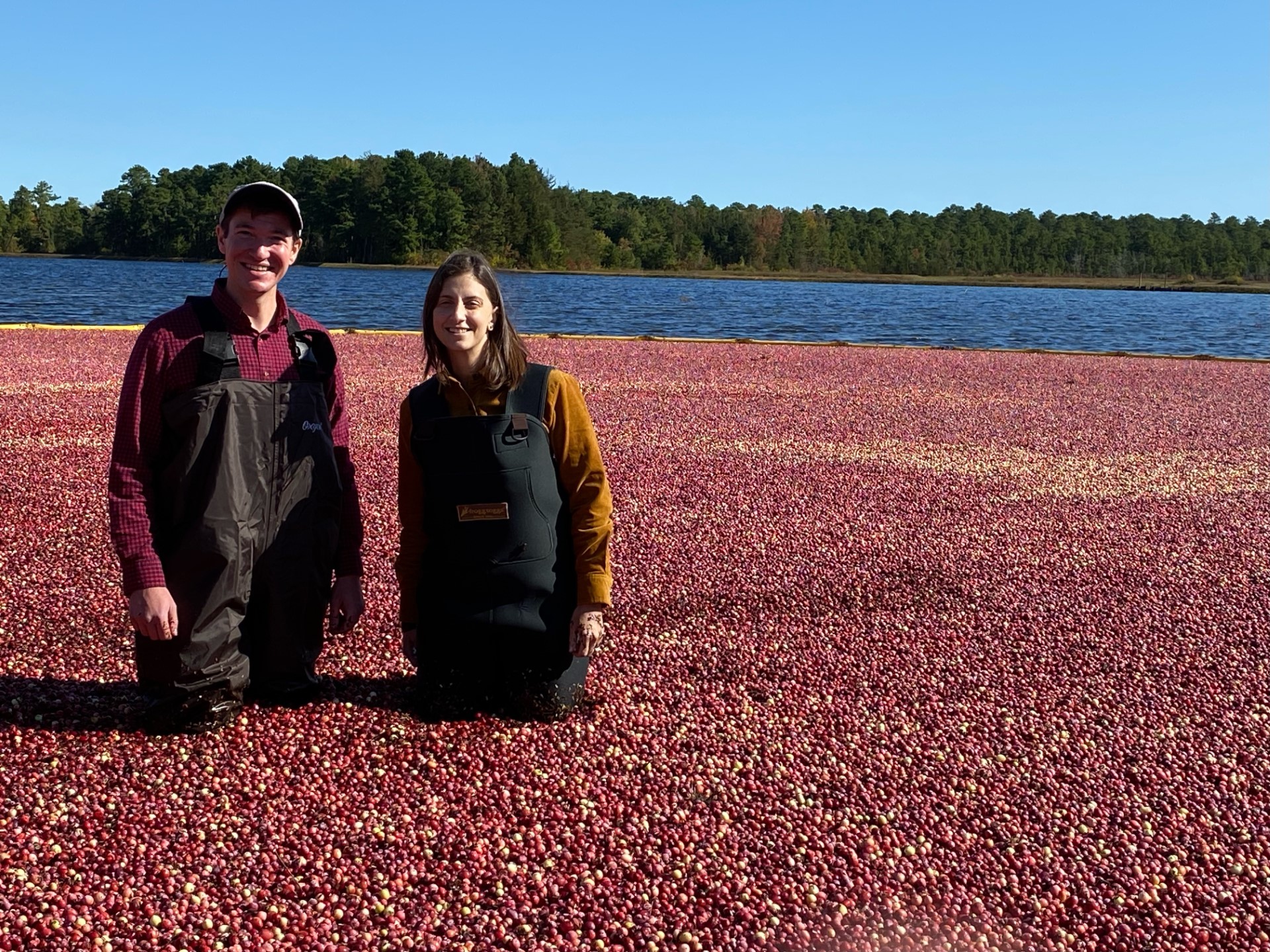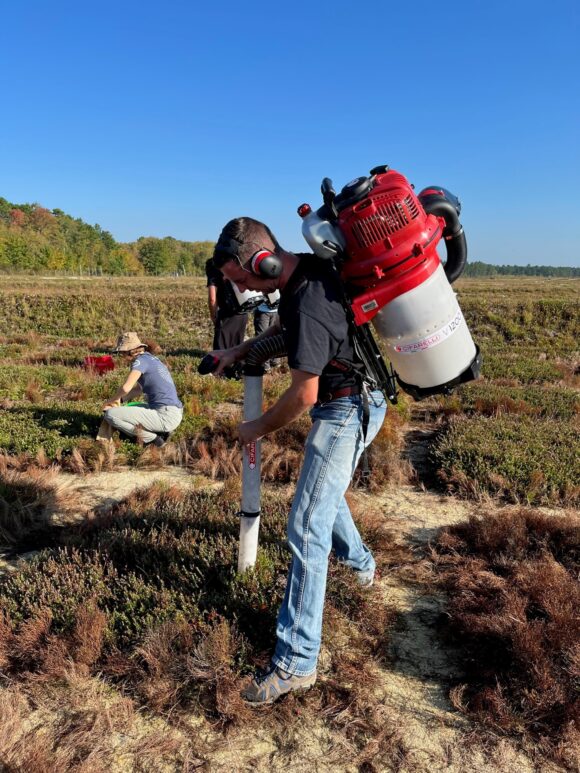
Dr. Gina Sideli, Rutgers breeder, and Dr. Jeff Neyhart, research geneticist USDA-ARS, in the cranberry bog. Photo by Lindsay Wells-Hansen, Ocean Spray Scientist.
Cranberries are a staple on any Thanksgiving table, and in light of the ongoing climate crisis, NJAES is developing new harvesting techniques to ensure they stay there.
The Philip E. Marucci Center for Blueberry and Cranberry Research and Extension in Chatsworth, New Jersey, a substation of the NJAES, is working to ensure the harvesting of high-quality cranberries using applied research, minimizing pesticide use, studying the health benefits of phytochemicals, and investigating diseases that affect these crops. In terms of sustainability, the Marucci Center is working to find alternative solutions for pesticides, herbicides, and fungicides, resulting in increased breeding performance and keeping cranberries on your table this fall.
Chatsworth, where the cranberries are grown, is located in the Pine Barrens, which is known for its sandy soil. Because of the unique conditions of the soil, farmers have to be cautious of their growing practices, especially because cranberries and blueberries are two of the few crops that can be grown in the Pine Barrens.
According to Dr. Gina Sideli, an assistant professor at Rutgers who specializes in blueberry and cranberry breeding, a main focus of the breeding program is to release cultivars, or “varieties,” that will be more adaptable to the changing climate. She says that introducing these varieties may shift the bloom or harvest of the cranberries to earlier in the season to avoid “fruit rot,” or fungal growth that occurs as a result of mature berries basking in the extreme summer heat.
Sideli also mentions that creating new cultivars will increase the economic sustainability for Rutgers and the farmers, as they are able to buy and sell the new varieties.
One of Sideli’s research focus for the program is introducing phenomics, which is a large-scale phenotyping using computer vision technology in the field to collect data. This makes it possible for the team to analyze the images all at once and, in turn, evaluate more seedlings, increasing the efficiency of cranberry harvesting and research. She’s also using genomic sequence data to help understand the underlying genetics of cranberries in order to help make better selection decisions.

Tom Spain, field technician, conducting field work. Photo by Gina Sideli.
Changing the growing and sustainability practices of cranberries is especially important due to the fruit’s health benefits. A chemical compound found in cranberries called proanthocyanidins is essential for maintaining urinary health, and NJAES is focusing on increasing these compounds.
As Thanksgiving approaches, here are some fun facts about cranberries:
- About 20% of the cranberries consumed by Americans during the year are eaten on Thanksgiving.
- Cranberries are native to the Northeast but can be found as far north as Alaska and as far south as West Virginia.
- Blueberries are the most closely related to cranberries, and crossbreeds can be made possible.
- According to the state, New Jersey’s cranberry production is ranked third in the United States.
- Cranberries don’t grow in water as most people assume; they grow in bogs, which are then flooded for harvest.
The article was written by OPOC intern Emily Ranieri.

